EVGA SuperNOVA 650 G1+ PSU Review: Efficient & Silent
Why you can trust Tom's Hardware
Transient Response Tests
Advanced Transient Response Tests
For details on our transient response testing, please click here.
Ιn these tests, we monitor the 650 G1+'s response in several scenarios. First, a transient load (10A at +12V, 5A at 5V, 5A at 3.3V, and 0.5A at 5VSB) is applied for 200ms as the PSU works at 20 percent load. In the second scenario, it's hit by the same transient load while operating at 50 percent load.
In the next sets of tests, we increase the transient load on the major rails with a new configuration: 15A at +12V, 6A at 5V, 6A at 3.3V, and 0.5A at 5VSB. We also increase the load-changing repetition rate from 5 Hz (200ms) to 50 Hz (20ms). Again, this runs with the PSU operating at 20 and 50 percent load.
The last tests are even tougher. Although we keep the same loads, the load-changing repetition rate rises to 1 kHz (1ms).
In all of the tests, we use an oscilloscope to measure the voltage drops caused by the transient load. The voltages should remain within the ATX specification's regulation limits.
These tests are crucial because they simulate the transient loads a PSU is likely to handle (such as booting a RAID array or an instant 100 percent load of CPU/GPUs). We call these "Advanced Transient Response Tests," and they are designed to be very tough to master, especially for a PSU with a capacity of less than 500W.
Advanced Transient Response at 20 Percent – 200ms
| Voltage | Before | After | Change | Pass/Fail |
|---|---|---|---|---|
| 12V | 12.083V | 11.918V | 1.37% | Pass |
| 5V | 4.956V | 4.770V | 3.75% | Pass |
| 3.3V | 3.321V | 3.154V | 5.03% | Pass |
| 5VSB | 4.933V | 4.890V | 0.87% | Pass |
Advanced Transient Response at 20 Percent – 20ms
| Voltage | Before | After | Change | Pass/Fail |
|---|---|---|---|---|
| 12V | 12.083V | 11.854V | 1.90% | Pass |
| 5V | 4.955V | 4.739V | 4.36% | Fail |
| 3.3V | 3.321V | 3.122V | 5.99% | Fail |
| 5VSB | 4.933V | 4.851V | 1.66% | Pass |
Advanced Transient Response at 20 Percent – 1ms
| Voltage | Before | After | Change | Pass/Fail |
|---|---|---|---|---|
| 12V | 12.083V | 11.931V | 1.26% | Pass |
| 5V | 4.955V | 4.742V | 4.30% | Fail |
| 3.3V | 3.321V | 3.151V | 5.12% | Pass |
| 5VSB | 4.932V | 4.864V | 1.38% | Pass |
Advanced Transient Response at 50 Percent – 200ms
| Voltage | Before | After | Change | Pass/Fail |
|---|---|---|---|---|
| 12V | 12.074V | 11.909V | 1.37% | Pass |
| 5V | 4.946V | 4.753V | 3.90% | Pass |
| 3.3V | 3.311V | 3.135V | 5.32% | Fail |
| 5VSB | 4.916V | 4.870V | 0.94% | Pass |
Advanced Transient Response at 50 Percent – 20ms
| Voltage | Before | After | Change | Pass/Fail |
|---|---|---|---|---|
| 12V | 12.074V | 11.838V | 1.95% | Pass |
| 5V | 4.946V | 4.718V | 4.61% | Fail |
| 3.3V | 3.312V | 3.104V | 6.28% | Fail |
| 5VSB | 4.916V | 4.826V | 1.83% | Pass |
Advanced Transient Response at 50 Percent – 1ms
| Voltage | Before | After | Change | Pass/Fail |
|---|---|---|---|---|
| 12V | 12.074V | 11.893V | 1.50% | Pass |
| 5V | 4.946V | 4.728V | 4.41% | Fail |
| 3.3V | 3.312V | 3.107V | 6.19% | Fail |
| 5VSB | 4.916V | 4.846V | 1.42% | Pass |




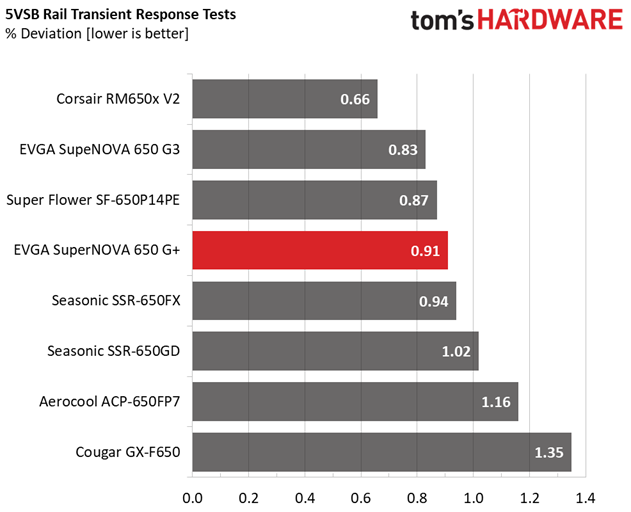
The 650 G1+'s transient response was really bad. Then again, we didn't expect anything better, given the ACRF topology EVGA uses.
Get Tom's Hardware's best news and in-depth reviews, straight to your inbox.
Here are the oscilloscope screenshots we took during Advanced Transient Response Testing:
Transient Response At 20 Percent Load – 200ms



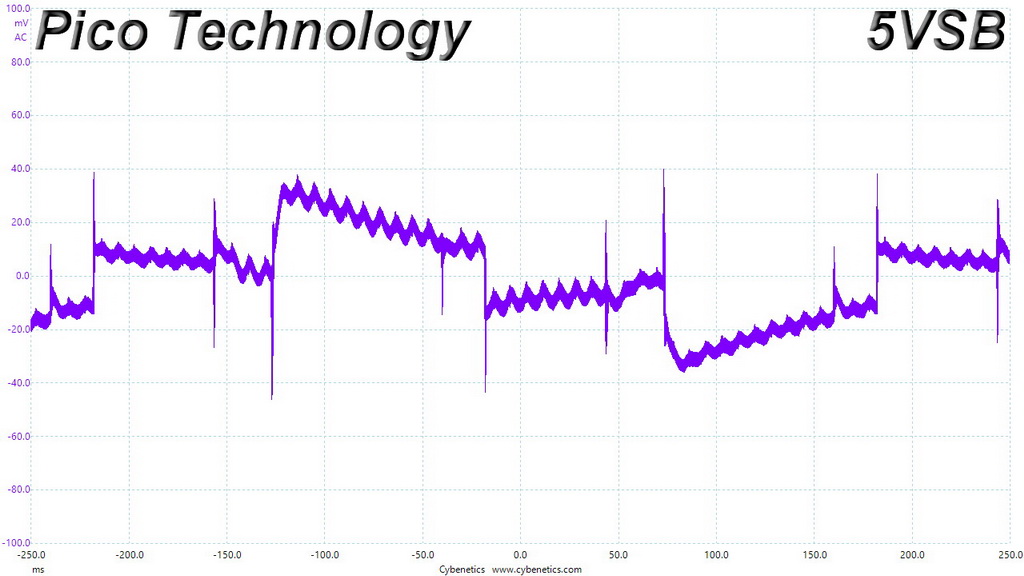
Transient Response At 20 Percent Load – 20ms


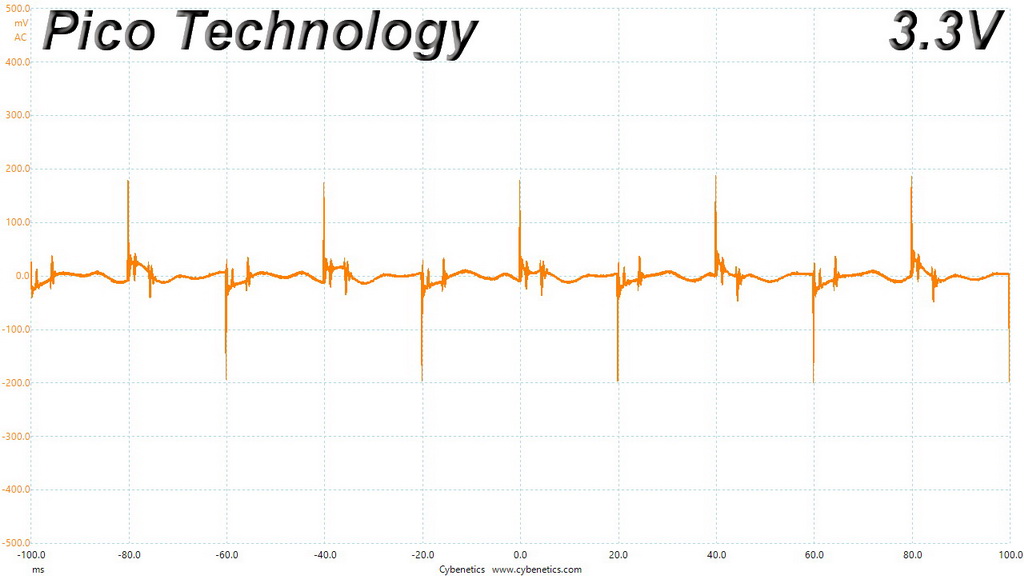

Transient Response At 20 Percent Load – 1ms
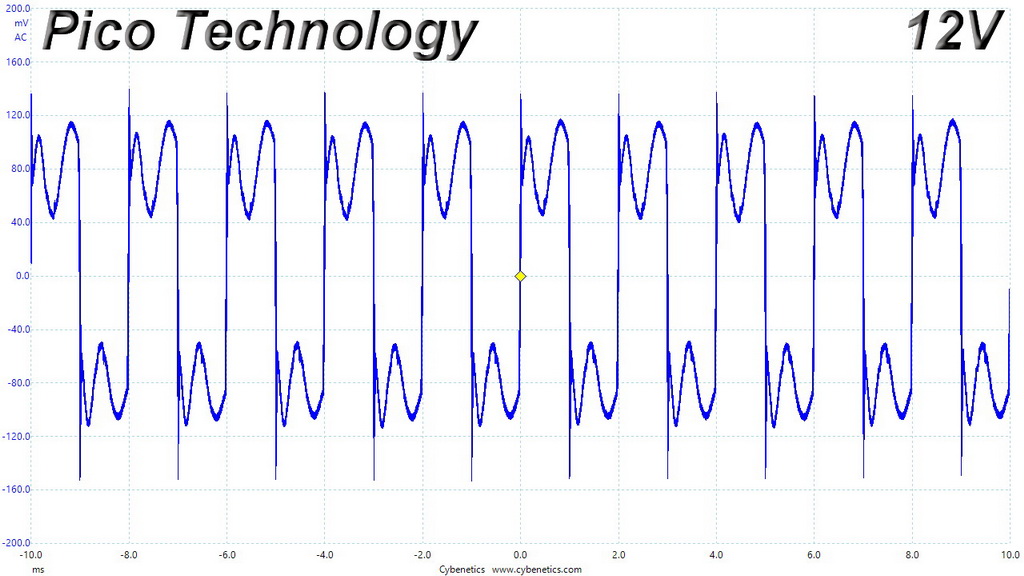
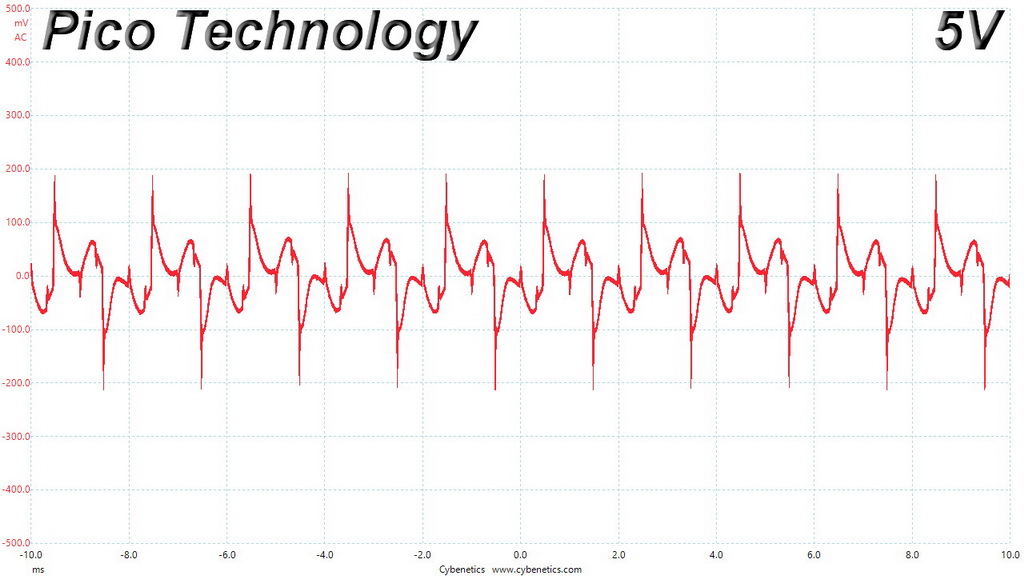


Transient Response At 50 Percent Load – 200ms
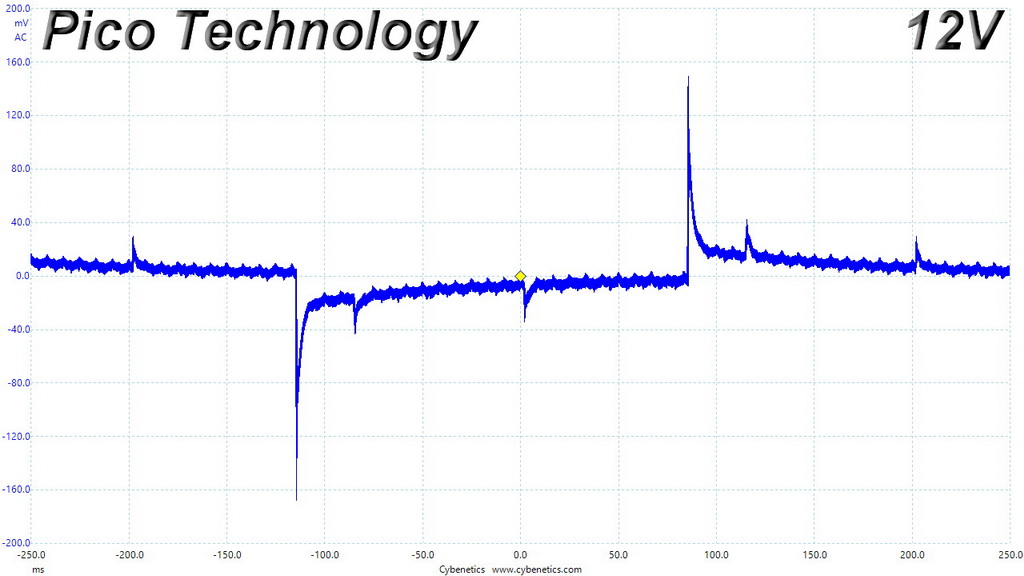


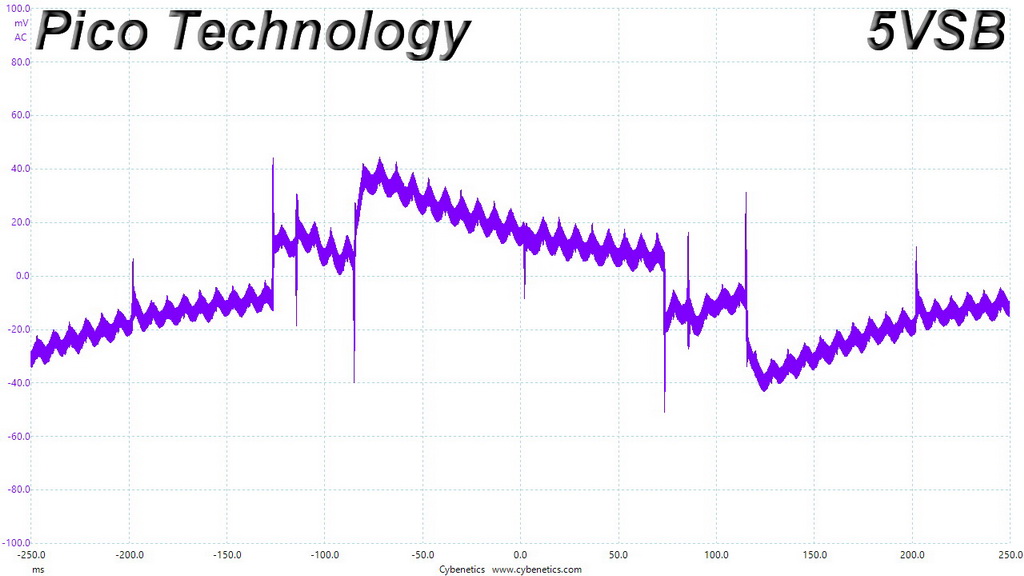
Transient Response At 50 Percent Load – 20ms
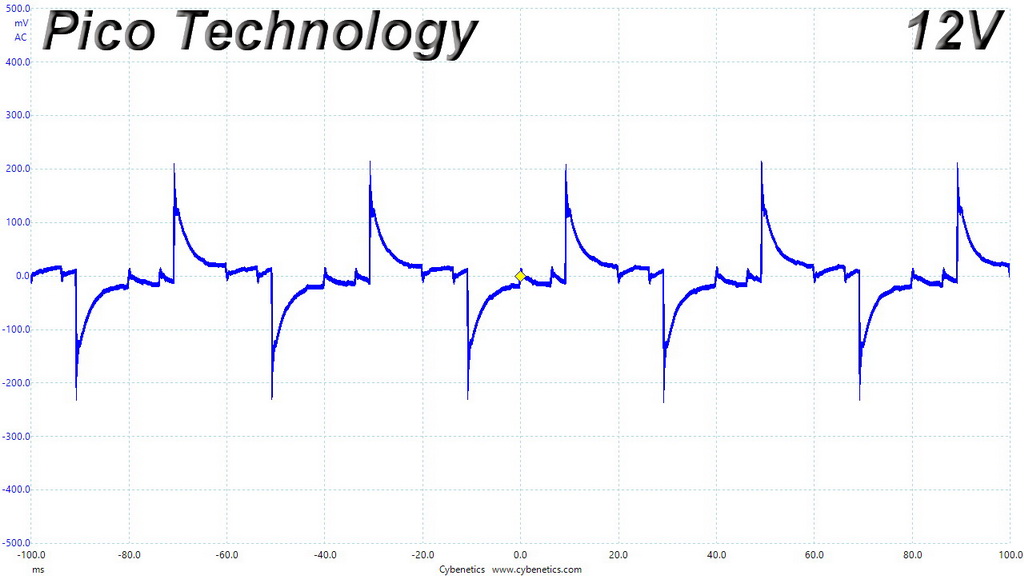



Transient Response At 50 Percent Load – 1ms




Turn-On Transient Tests
In the next set of tests, we measure the 650 G1+’s response in simpler transient load scenarios—during its power-on phase.
For our first measurement, we turn the 650 G1+ off, dial in the maximum current the 5VSB rail can handle, and switch the PSU back on. In the second test, we dial the maximum load the +12V rail can handle and start the PSU while it is in standby mode. In the last test, while the PSU is completely switched off (we cut off the power or switch the PSU off), we dial the maximum load the +12V rail can handle before restoring power. The ATX specification states that recorded spikes on all rails should not exceed 10 percent of their nominal values (+10 percent for 12V is 13.2V, and 5.5 V for 5V).

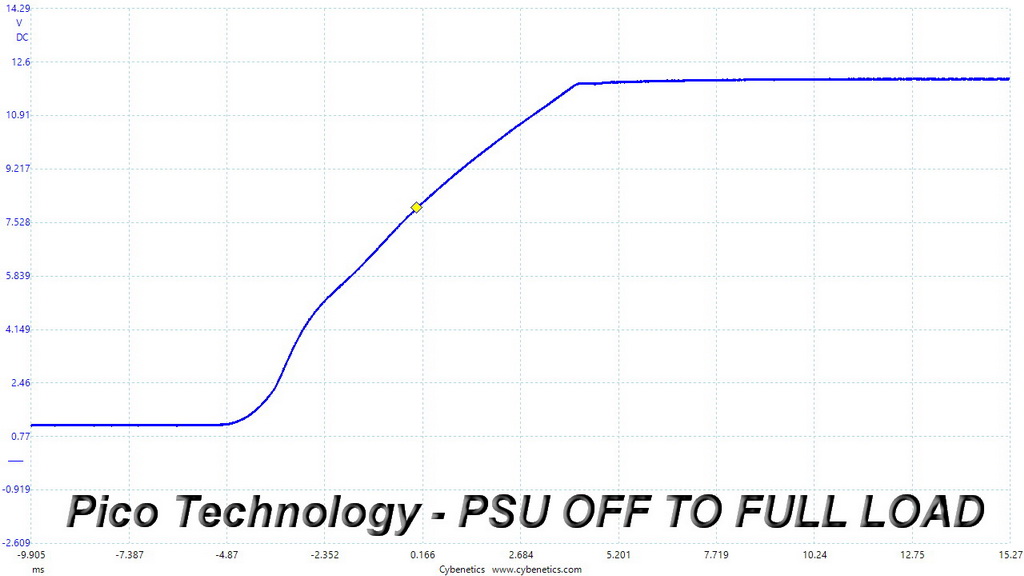

We noticed a smooth voltage overshoot at 5VSB. Moreover, in the last +12V test, there were a couple of tiny spikes that didn't worry us.
MORE: Best Power Supplies
MORE: How We Test Power Supplies
MORE: All Power Supply Content
Current page: Transient Response Tests
Prev Page Cross-Load Tests & Infrared Images Next Page Ripple Measurements
Aris Mpitziopoulos is a contributing editor at Tom's Hardware, covering PSUs.
-
WINTERLORD i read all your guys articles weather im in the market for new or not and i read that article and almost right off the top the article was killed with oh you can get the g3 for same price hah anyways guess if you hadnt someone woulda been quick to mentionReply -
dunn.md Your review is based on the $110 MSRP. This PSU is currently selling for $69.99 on Amazon. Would you highly recommend this PSU at this significantly lower price point?Reply -
DSzymborski The EVGA G3 650W can be bought for $69.99 also and it's much preferable.Reply
Like about 2/3 of the 850 or so individual PSUs EVGA is selling, I can't figure out exactly who the target market is for this. -
HERETIC-1 Calling this G1 "SUPERNOVA" is a bit on the nose.Reply
These are manufactured by FSP.
EVGA's excellent G2 and G3 SUPERNOVA's are manufactured by SUPERFLOWER.... -
Melon_seed Thank you for the review. I shall drop this off my list. Now its either Superflower leadex II or if I am lucky, Seasonic focus plus.Reply